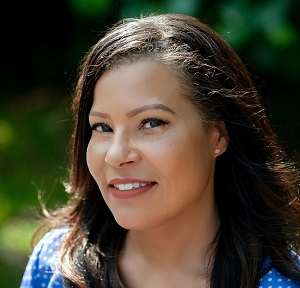Free UX Design Course
Dive into UX design with our free starter course. Transform your creative ideas into user-friendly solutions.
As digitalization accelerates, the demand for UX design skills grows. LinkedIn’s top jobs list often features UX designer roles with salaries from $80,000 to $103,000 and nearly 11,000 job openings. The increasing demand for UX design professionals has piqued interest in pursuing this field, leading many to consider career shifts. While some entering this domain come with a background in graphic design, UI/UX design, or a relevant degree, a large portion begin with little to no experience.
These newcomers frequently opt for UX bootcamps, gaining essential skills efficiently and affordably, providing an alternative to the traditional academic path. For those eager to start a new career, here’s a guide to becoming a UX designer, even without prior experience.
Table of Contents


Become A UX Designer. Land a Job or Your Money Back.
Master Adobe XD, Figma, and Sketch. Work 1:1 with an industry mentor. Build a portfolio. Land a job — or your money back.
Can You Become a UX Designer Without Experience?
Yes, you can transition into UX design without prior experience by learning the fundamentals, building a portfolio, and practicing design thinking. Engage with the design community and stay up-to-date with industry trends to accelerate your growth.
How To Become a UX Designer Regardless of Your Experience
UX designers need a vision for their career, a combination of skills, critical thinking, some practice, a UX portfolio with personal projects, and a job search strategy. The learning process is different for everyone, so you can get UX experience in a number of ways. Here’s how to go about it.
1. Determine your ideal career path
The first step to building a UX design career is to envision it. Do your research to understand what kind of UX design jobs are available. This can include roles as a UX researcher, product designer, UI designer, information architect, or content designer. While all of these are UX design roles and need an overall understanding of the field, each requires a specialized skill set.
For instance, a content designer is a role for writers, while a UI designer is one for visual designers. So, before you embark on your UX design journey, determine your ideal career path. It need not be very specific at this point, a general direction will do. Once you decide what you’re most excited about, you can build your career accordingly.
2. Establish a strong base in UX fundamentals
Learning foundational skills in UX design is crucial for building a successful career in the field. It provides the essential knowledge and tools needed to create user-friendly and functional designs, understand user needs, solve problems, and adapt to industry changes. Mastery of these core skills enhances collaboration with other professionals, boosts confidence, and helps you create a strong portfolio that showcases your capabilities and creativity.
Together, these fundamentals form the foundation of successful UX design, leading to products that meet user needs and expectations while achieving business goals.
3. Familiarize yourself with UX tools
In UX design, there are various tools that can help streamline the design process and create high-quality user experiences. Here are some essential UX design tools and why they are important:
- Figma: Figma is a cloud-based design tool that allows for real-time collaboration. It’s excellent for creating wireframes, mockups, and prototypes. Its ability to work seamlessly with team members makes it a favorite for many UX designers.
- Sketch: Sketch is a popular design tool known for its ease of use and intuitive interface. It’s great for creating wireframes, mockups, and high-fidelity designs. It’s widely used in the industry, especially for web and app design.
- Adobe XD: Adobe XD is a comprehensive design tool that combines design and prototyping capabilities. It’s user-friendly and integrates well with other Adobe products, making it a versatile choice for UX designers.
- InVision: InVision is a prototyping tool that allows designers to create interactive prototypes and share them with team members and stakeholders. It’s great for testing designs and getting feedback early in the process.
4. Utilize free resources
For most UX design aspirants, an online course might be somewhat restrictive, focussing on only a few aspects of user experience. For instance, if you’re especially interested in UX research, free courses might only offer 1-2 modules in the area. For situations like these, you might gain a more in-depth look from other free resources such as blogs, UX influencers, and YouTube channels.
Blogs
There are several blogs online by UX professionals that cover the entire gamut of the field. The most popular ones are:
UX Influencers
One of the best ways to learn UX design is to listen. So, if you’re looking to launch a career in UX design, here are three influencers we recommend you subscribe to.
YouTube Channels
YouTube channels offer visual tutorials, expert insights, and practical tips to help you learn UX design effectively. You can subscribe to the following four channels:
5. Opt for a course
If you are new to the field, completing a prep course that introduces you to the world of design can be hugely beneficial. You’ll learn everything you need to know about design, UI/UX concepts, tools, and the industry in general. It’s a great launchpad for budding designers. You can also leverage free resources:
Take a free course
Taking a free UX design online course will allow you to test the waters of UX design. Before taking the plunge into a UX design career, you can explore what it entails, what skills you need, what kind of work you might do, etc. This way, you can try your hand at UX design and see if you are still excited. Below are some of our recommendations.
- Free UX Design Curriculum by Springboard. It covers design research methods, user-centered design techniques, interviewing users in real-world situations, creating personas to define users, and deliverables a UX designer is expected to produce.
- InVision for Designers’ Learning Path. It offers free courses on using craft for design, freehand for whiteboarding, prototypes for no-code prototyping, specs for developer collaboration, and spaces for documentation.
- Become a User Experience Designer by Linkedin Learning. The program offers 8h 30m of content spread across 10 chapters. It covers analyzing user data, creating personas, creating storyboards, prototyping, interaction design, and sketching.
- The Gymnasium’s UX Fundamentals. This course is for professional graphic/web designers looking to upgrade to user experience design. It covers an introduction to user research, empathy, wireframing, prototyping, information architecture, UX writing, best practices, and testing.
Complete a bootcamp
If you’ve come so far, it’s time to get serious about your UX design career. Self-learning, while being flexible and dynamic, can be a lonely endeavor. It does not offer a strategic approach to a career transition. It also lacks the mentorship and coaching needed to make a successful transition. A good UX design bootcamp can help learn in a structured manner. You’ll gain practical UX experience while you study. Here are some of the top UX design bootcamps you must consider.
- Springboard — UX Design Bootcamp. The immersive Springboard UX bootcamp is aimed at helping aspiring designers make a successful transition to a UX career. It includes a 350+ hour curriculum with a combination of videos, in-depth articles, hands-on UX experience with multiple mini-projects and three portfolio projects, 1:1 mentorship, career coaching, and a tuition-back guarantee.
- Kenzie Academy — UX Design Career Program Part-Time Course. Southern New Hampshire University’s UX Design certificate program combines design and soft skills needed to launch a UX career. In addition to self-learning modules, it also offers scheduled interactive sessions for group work, Q&A, application review, and study halls.
6. Get a certification
Another way to gain the credentials that make designers stand out in the market is to get a certification. Here are some of the best certificate programs available today.
7. Work on UX projects
Once you’ve had the chance to read, listen, and watch experts discuss UX design, it’s time to gain some hands-on experience. Begin working on some personal UX projects. You can pick from an idea you already have, an imaginary brand/business, participate in online contests, or volunteer to help a local small business in its digital presence. While beginning to work on projects, start small to make things manageable.
- Freelance projects: Offer your services on freelance platforms or through personal connections. Working with clients on small projects can provide practical experience and build your portfolio.
- Personal projects: Create your own projects to build your portfolio. Design apps, websites, or other digital products that showcase your skills and understanding of UX principles.
Here are a few project ideas to get you started:
8. Gain UX experience
While you don’t need professional experience to get started, some hands-on practice doesn’t hurt when you’re on the hunt for your first job. Here are some ways to do that:
- Get an internship. There are plenty of paid and unpaid UX design internships available for beginners. Whether it is as part of a large team at an enterprise or as the only UX designer for a small firm, working on a business problem can set you up as a professional. Look for internships on job boards and LinkedIn. You can also reach out to mentors and connections to find a position at their workplace.
- Participate in hackathons: Join hackathons to work on collaborative design projects in a time-sensitive environment. This experience helps you improve your teamwork and problem-solving skills.
- Volunteer work: Offer your design skills to nonprofit organizations. This can provide you with hands-on experience while contributing to a good cause.
9. Find a mentor
Mentors can support your UX design journey by providing personalized guidance, valuable feedback, and industry insights. They offer encouragement, share career development tips, and connect you with industry professionals. Their experience helps you avoid pitfalls and stay motivated, making your transition into UX design smoother and more successful.
Finding a mentor in UX design involves networking and engaging with industry professionals. Attend UX events, conferences, and meetups to meet potential mentors. Join online communities and forums to connect with experienced designers. Reach out to professionals on platforms like LinkedIn or Twitter, expressing genuine interest in their work. Remember, building relationships takes time—be patient and persistent.
10. Network with professionals
Networking helps beginners stay updated on the latest trends, tools, and job opportunities and fosters connections that can lead to potential collaborations and internships.
- Attend industry events: Participate in conferences, meetups, and workshops to meet other UX designers and industry professionals.
- Join online communities: Engage in discussions on UX forums like Designer Hangout, UX Collective, and The Interaction Design Foundation, social media groups, and professional platforms like LinkedIn.
- Seek informational interviews: Ask for short meetings with professionals to learn about their experiences and gain insights into the field.
- Share your work: Publish your projects on platforms like Behance or Dribbble to showcase your skills and attract potential collaborators.
- Stay active and consistent: Regularly engage with your network by sharing knowledge, offering help, and celebrating others’ achievements.
11. Apply for entry-level UX jobs
Applying for entry-level UX jobs requires a strategic approach to showcase your skills, enthusiasm, and potential. Here’s how you can prepare and apply effectively:
- Build a portfolio: Create a portfolio showcasing your UX projects, including wireframes, prototypes, user research, and case studies. Include detailed explanations of your process and your role in each project.
- Tailor your resume: Customize your resume for each job application, highlighting relevant skills, experiences, and education. Emphasize any projects or internships related to UX design.
- Leverage online job boards: Use online job boards like LinkedIn, Indeed, and Glassdoor to find entry-level UX job openings. Set up job alerts for UX positions in your area or preferred companies.
Get To Know Other Design Students
Allyssa Van Camp
Student at Springboard
Anna Peterson
UI/UX Designer at Thumbstopper
Xiomara Romine
UX/UI Designer at FutureSight
Essential Skills for a UX Designer
A UX designer needs a combination of technical and soft skills to excel in the field.
Technical skills
A UX design expert must be skilled in the following areas:
Soft Skills
Soft skills are the people and practical skills that allow you to navigate and bring value to a professional environment.
By mastering these technical and soft skills, UX designers can create user-centric designs and work effectively within multidisciplinary teams.
Can Non-Designers Transition to a UX Career?
It may feel like it’s impossible, but it’s not. If you want to get a UX job and are willing to work for it, you can! Many graphic designers, researchers, and web developers have successfully changed careers with help from tips like these:
- Look for transferable skills: If you want to get a UX job, highlight any transferable skills you have. For example, if you have an undergraduate degree in graphic design, research, or consumer behavior, you may be able to land a UX job based on those skills. Furthermore, skills like problem-solving, research, and empathy are valuable in UX design. Use your existing strengths to your advantage.
- Learn UX fundamentals: Read books and watch videos, opt for online courses or bootcamps to understand the basics of UX design, including user research, wireframing, and prototyping. It’s a great place to start if you want to familiarize yourself with UX basics.
- Seek mentorship: Connect with UX professionals through online communities, industry events, or mentorship programs. Mentor support can lead to valuable insights and job opportunities.
- Stay open to feedback: Feedback helps you grow as a designer. Seek input on your work and learn from it to improve your skills.
- Stay curious and adaptable: UX is an ever-evolving field. Stay updated on industry trends and be open to learning new tools and techniques.
5 Entry-Level UX Jobs You Can Get Without Experience
How To Increase the Odds of Getting Hired as a UX Designer
As we’ve seen above, there are plenty of opportunities in UX design. Organizations are open to hiring fresh graduates and career transitioners without prior experience in the field. To make yourself attractive for entry-level UX jobs, make sure of the following.
By following these strategies, you can increase your odds of landing a UX design job and making a positive impression on potential employers.
FAQs about Getting Into UX Design with No Experience
Here are some FAQs on how to land your first UX design role without experience.
Is UX Design a Good Career?
UX design is a good career choice due to its growing demand and importance across various industries. It offers opportunities for creative problem-solving, strong job prospects, competitive salaries, and benefits like remote work options. For those who enjoy working at the intersection of technology and human behavior, UX design can be a rewarding and fulfilling career.
Can I Self-Study UX Design?
Yes, you can self-study UX design. Many successful UX designers begin their careers through independent learning. Start with online tutorials, courses, and videos on platforms like Coursera, Udemy, and YouTube. These resources offer a wide range of topics and practical exercises to build your skills.
Which One Should I Learn First, UI or UX?
The choice between learning UI (User Interface) or UX (User Experience) first depends on your interests and career goals. If you’re interested in understanding user needs and crafting experiences that solve problems, start with UX, focusing on user research, wireframing, prototyping, and usability testing. If you prefer the visual and interactive aspects of design, begin with UI, working on creating aesthetically pleasing interfaces using color theory, typography, and layout principles. Both UI and UX are interconnected, and having expertise in both areas makes you a versatile designer.
Is AI Going To Replace UX Designers?
AI won’t replace UX designers but can complement their work by automating tasks like data analysis and user testing. Designers provide essential insights, empathy, and problem-solving skills to create meaningful user experiences. AI can assist designers with data-driven insights and a deeper understanding of user behavior, but crafting user-centered designs requires a nuanced understanding of human needs and emotions, which AI cannot fully replicate. Therefore, AI can enhance the work of UX designers, but it cannot entirely replace their role.
Since you’re here…
Are you a future UX designer? Enroll in our UI/UX Bootcamp and join over 10,000 students who have successfully changed careers with us. Want to get wireframing right this second? Check out our free UX design course today.





![The 9 Best UI Design Courses for Beginners [2022 Guide]](https://www.springboard.com/blog/wp-content/uploads/2022/08/ui-design-bootcamps.png)
